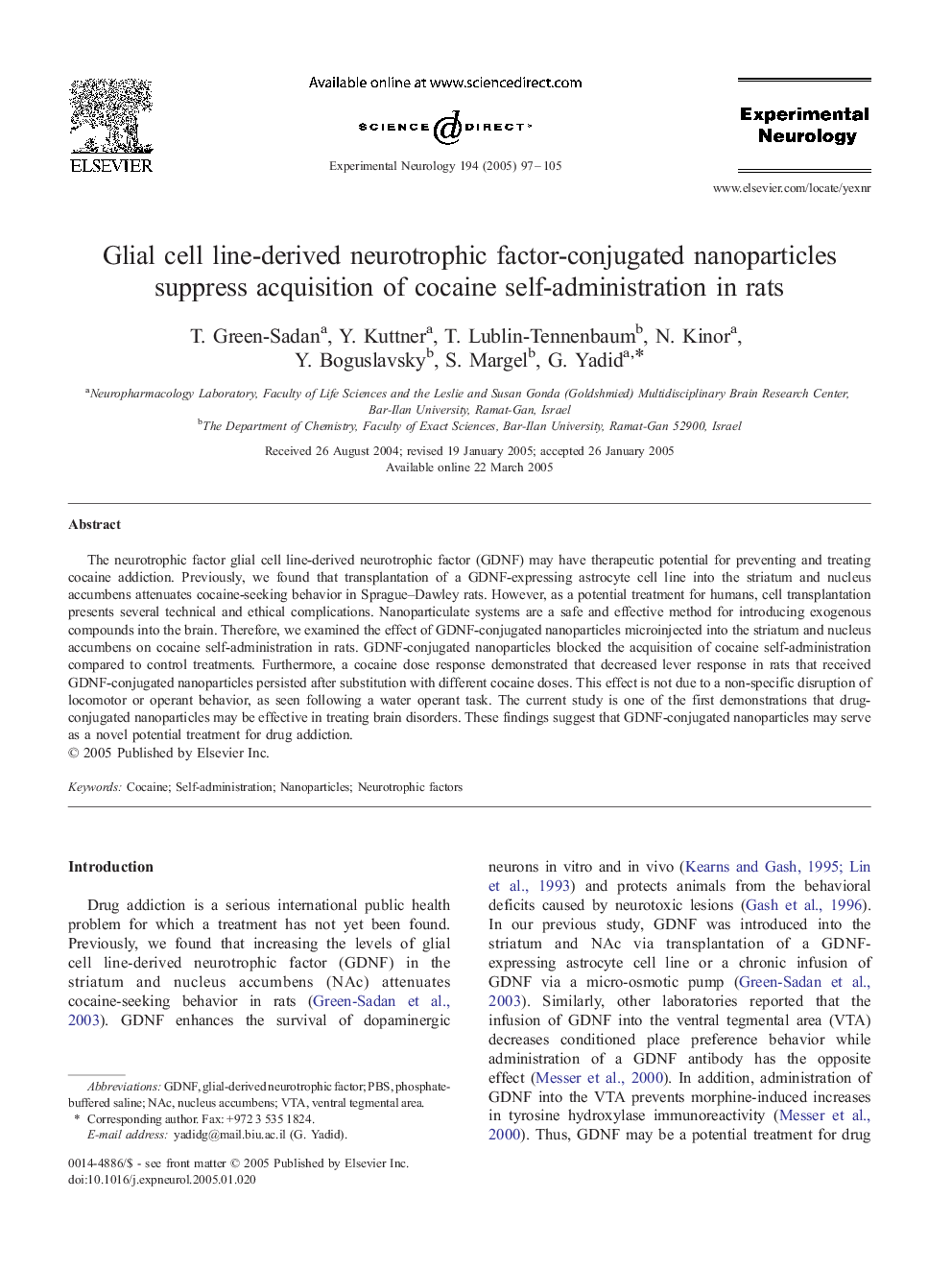| Article ID | Journal | Published Year | Pages | File Type |
|---|---|---|---|---|
| 9191963 | Experimental Neurology | 2005 | 9 Pages |
Abstract
The neurotrophic factor glial cell line-derived neurotrophic factor (GDNF) may have therapeutic potential for preventing and treating cocaine addiction. Previously, we found that transplantation of a GDNF-expressing astrocyte cell line into the striatum and nucleus accumbens attenuates cocaine-seeking behavior in Sprague-Dawley rats. However, as a potential treatment for humans, cell transplantation presents several technical and ethical complications. Nanoparticulate systems are a safe and effective method for introducing exogenous compounds into the brain. Therefore, we examined the effect of GDNF-conjugated nanoparticles microinjected into the striatum and nucleus accumbens on cocaine self-administration in rats. GDNF-conjugated nanoparticles blocked the acquisition of cocaine self-administration compared to control treatments. Furthermore, a cocaine dose response demonstrated that decreased lever response in rats that received GDNF-conjugated nanoparticles persisted after substitution with different cocaine doses. This effect is not due to a non-specific disruption of locomotor or operant behavior, as seen following a water operant task. The current study is one of the first demonstrations that drug-conjugated nanoparticles may be effective in treating brain disorders. These findings suggest that GDNF-conjugated nanoparticles may serve as a novel potential treatment for drug addiction.
Keywords
Related Topics
Life Sciences
Neuroscience
Neurology
Authors
T. Green-Sadan, Y. Kuttner, T. Lublin-Tennenbaum, N. Kinor, Y. Boguslavsky, S. Margel, G. Yadid,
